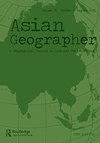Bridging the perception gap? When top-down built megaprojects meet bottom-up perceptions: a case study of Suramadu bridge, Indonesia
IF 2.2
Q2 GEOGRAPHY
引用次数: 6
Abstract
ABSTRACT For the last few decades, the development of mega-infrastructure projects has been high on the agendas of policymakers in Southeast Asia. Despite the potential benefits of such projects, there are also inevitable societal impacts that often lead to protests by local people. In general, most literature on megaprojects focuses solely on managing projects, with limited coverage of local people’s perceptions. This article, however, offers an analytical approach to perception making, adopted from psychology theories, which is then elaborated upon in a quantitative and qualitative empirical setting using the Suramadu cable-stayed bridge in Indonesia as a case study. Our main argument is that perceptions about megaprojects can change as a result of long-term, high-level exposure to such projects. The results imply the need for megaproject development to take people’s perceptions into account to bridge the gap between top-down expected benefits and bottom-up acceptance or rejection by those outside the central power.弥合认知差距?当自上而下建造的大型项目遇到自下而上的看法时:以印度尼西亚苏拉马都大桥为例
摘要在过去的几十年里,大型基础设施项目的发展一直是东南亚决策者的重要议程。尽管这些项目有潜在的好处,但也有不可避免的社会影响,经常导致当地人的抗议。一般来说,大多数关于大型项目的文献只关注项目管理,对当地人的看法报道有限。然而,本文提供了一种从心理学理论中提取的感知分析方法,然后以印度尼西亚苏拉马都斜拉桥为例,在定量和定性的实证环境中对其进行了阐述。我们的主要论点是,对大型项目的看法可能会因为长期、高水平地接触此类项目而发生变化。研究结果表明,大型项目开发需要考虑人们的看法,以弥合自上而下的预期收益与自下而上的中央权力之外的人接受或拒绝之间的差距。
本文章由计算机程序翻译,如有差异,请以英文原文为准。
求助全文
约1分钟内获得全文
求助全文
来源期刊

Asian Geographer
GEOGRAPHY-
CiteScore
3.30
自引率
0.00%
发文量
7
期刊介绍:
Asian Geographer disseminates knowledge about geographical problems and issues focusing on Asia and the Pacific Rim. Papers dealing with other regions should have a linkage to Asia and the Pacific Rim. Original and timely articles dealing with any field of physical or human geographical inquiries and methodologies will be considered for publication. We welcome, for example, submissions on people-environment interactions, urban and regional development, transport and large infrastructure, migration, natural disasters and their management, environment and energy issues. While the focus of the journal is placed on original research articles, review papers as well as viewpoints and research notes under the category of “Asian Geography in Brief” are also considered. Review papers should critically and constructively analyse the current state of understanding on geographical and planning topics in Asia. The ‘Asian Geography in Brief’ section welcomes submissions of applied geographical and planning research about Asia. The section aims to showcase (1) the diverse geography and planning of Asia; and (2) the diverse geographical and planning research about Asia. The journal will also publish special issues on particular themes or areas. Book reviews can be included from time to time.
 求助内容:
求助内容: 应助结果提醒方式:
应助结果提醒方式:


